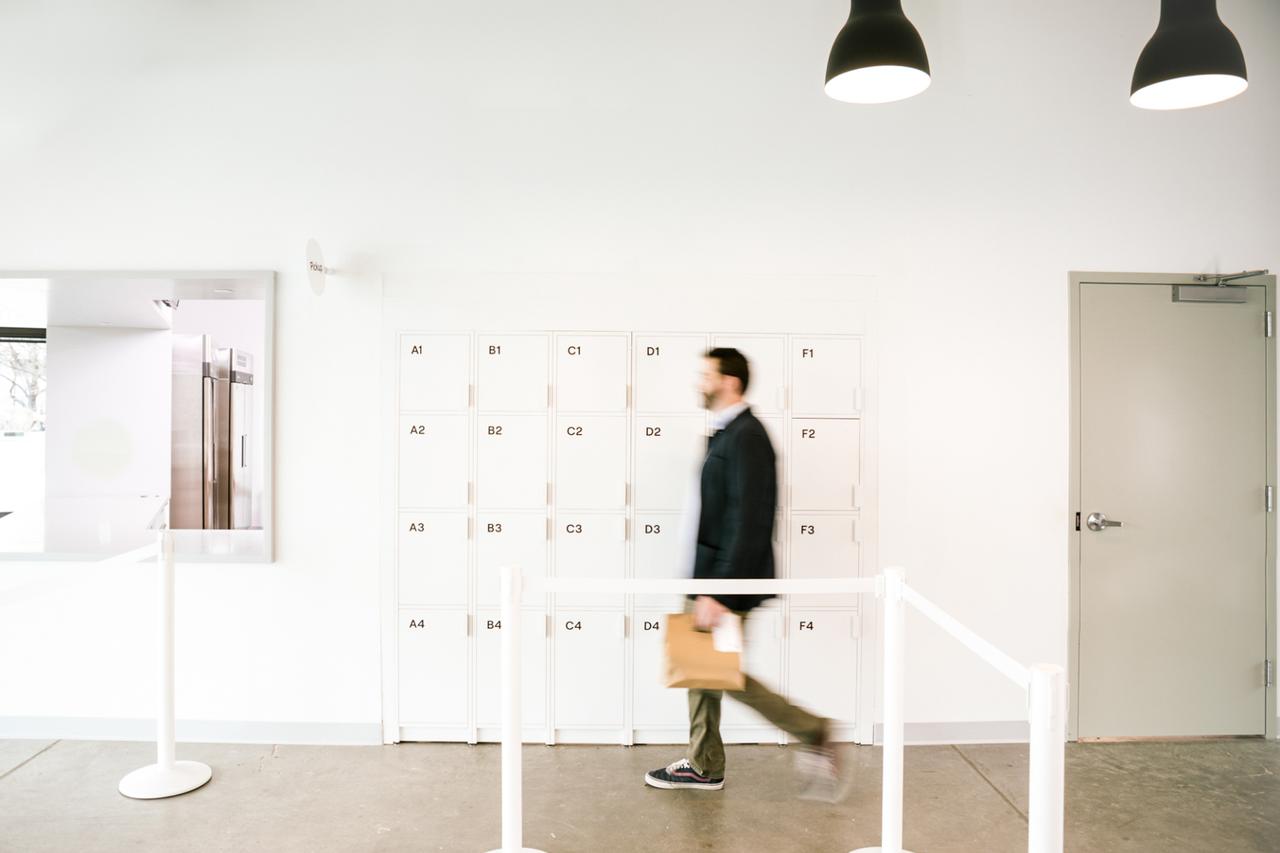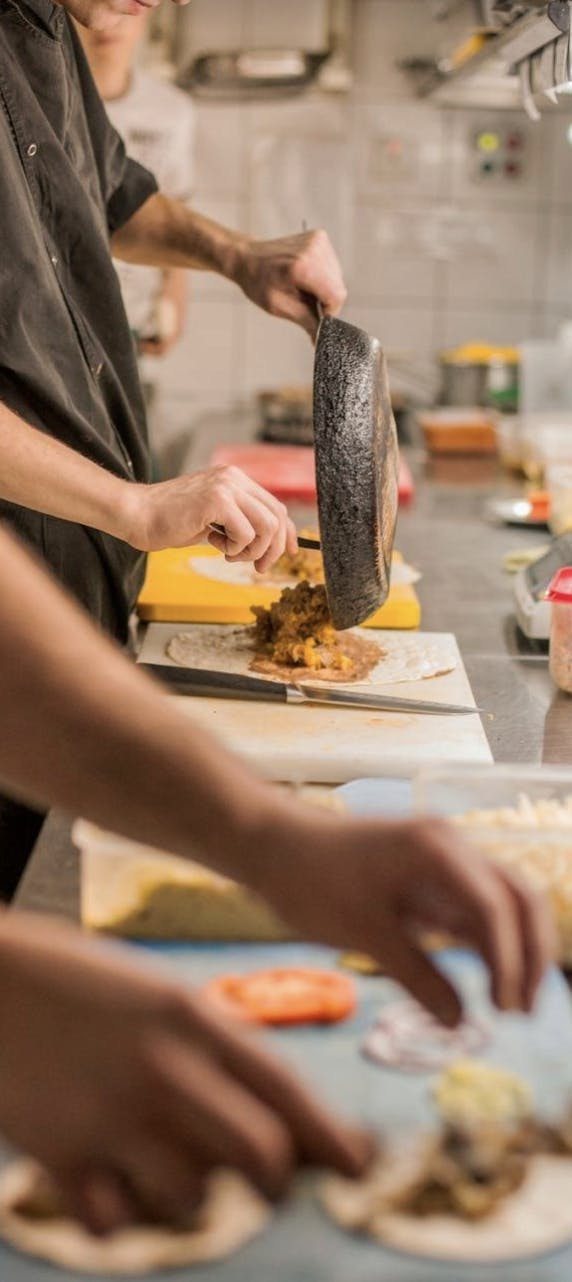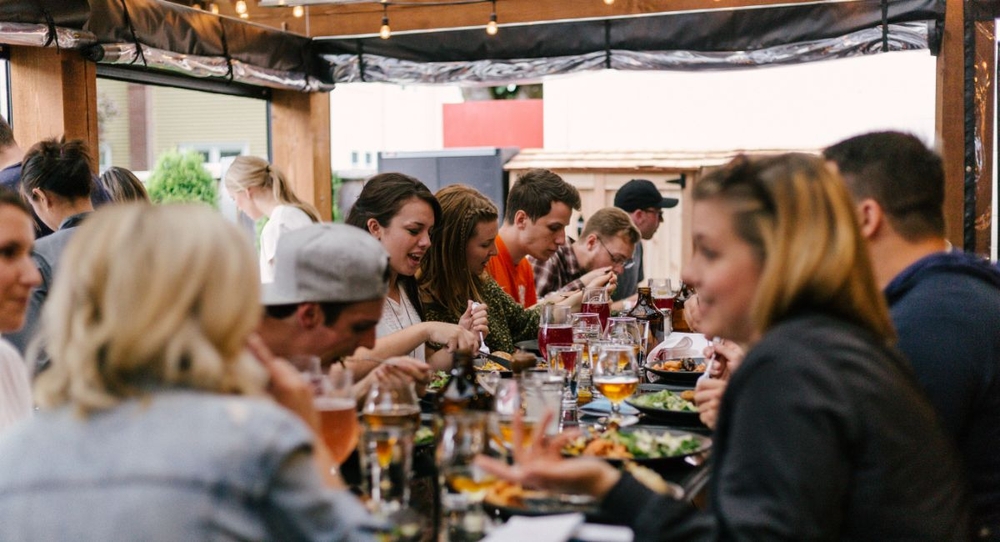Benefits of Third-Party Food Delivery Apps
Table of Contents
CloudKitchens
How many tacos can be delivered from a 1000sqft restaurant?
The same amount as a 200sqft ghost kitchen.

Although third-party delivery services have been around since the early ‘90s, they’ve experienced a surge in popularity over the past few years. What was once an optional perk that only a few local restaurants turned to for getting food from the kitchen to the customer, is now an expected service.
That said, it’s no secret that partnering with a third-party service can be quite expensive, especially for smaller restaurants, as well as small businesses that operate out of a ghost kitchen. If you’ve been wondering how to start a ghost kitchen or ways to up your delivery game, you may be wondering if turning to a third-party delivery service is worth it.
Third-party delivery services have become vital for restaurateurs today. But the good news is, the benefits they can present you with likely outweigh the cost of using them—and they may even save you money over time. To that end, let’s go over why third-party food delivery services are so important, the benefits they offer, and how to get set up with a third-party delivery platform.
Why are third-party delivery app services necessary?
More than ever, restaurant owners and managers who deliver food to customers are discovering the importance of third-party delivery services and the type of customer experience they offer. Thanks to a combination of technological innovation, consumer expectations, and circumstantial factors, third-party delivery apps have become the norm.
In other words, third-party services for online food delivery are more important to your business than ever. Let’s explore the reasons why:
- Consumers expect it–At this stage, consumers expect the option to order from your restaurant through a third-party service, usually through a food delivery app or online order delivery platform. That’s because third-party delivery apps offer ease and convenience with features like real-time order tracking and estimated delivery windows.
- Circumstances necessitate it–Although the prevalence of third-party delivery apps has been increasing for years, the COVID-19 pandemic sent the industry into overdrive as local restaurants scrambled for ways to stay in business with improved food safety and having a dependable third-party delivery service to field additional orders. With safety still a top concern for many business owners and consumers alike, online ordering and third-party delivery platforms continue to grow in popularity.
Technology makes it more efficient – Innovations in smartphones, GPS, and other technologies have helped to streamline the third-party delivery service process. It’s now easier than ever to seamlessly integrate your restaurant’s POS and management systems with these delivery platform features.

What are the benefits of using a third-party delivery service?
It’s easy to see how customers benefit from the options and convenience that third-party restaurant delivery services offer—consumers want to enjoy their favorite meals without leaving the house.
But what do restaurant operators stand to gain from partnering with a food delivery service?
The benefit of a localized virtual restaurant, like a ghost kitchen in Austin or whichever location you choose, is that you are able to work in conjunction with delivery services to maximize orders and streamline the operation.
Additionally, for restaurants, third-party food delivery services can help you:
- Improve your customer service: With high consumer demand for at-home food delivery, merely offering a delivery service isn’t enough. Fortunately, third-party delivery companies offer your customers the amenities they love and make it easier for you to impress them with your service.
- Lower your business costs: Although you may be hesitant about the upfront fees associated with some third-party delivery services, they can save you expenses in the long run. Outsourcing your delivery to a third-party delivery company means you don’t have to worry about the cost of gas, insuring vehicles and drivers, or providing transportation. Restaurant operators find that a third-party service is a practical solution, especially for a small business.
- Gain new customers: One of the biggest perks of using a third-party delivery service is that it’s also a form of advertising. When you use the third-party service or app, your restaurant becomes discoverable amongst new customers within your area.
- Increase your profits: Once you consider the new customers you’ll attract and the savings you’ll benefit from, it’s easy to understand how a third-party service can help boost your profits. In fact, reports suggest that joining a third-party service can increase your restaurant’s sales by an average of 30%.
- Optimize your labor: Third-party delivery partner services are an excellent way to streamline your workflow and optimize every aspect of your restaurant. As we mentioned above, they remove the need to hire your own delivery driver. But they also transmit orders digitally, freeing up your staff to attend to other issues. Lastly, third-party services also act as a barrier between you and the customer in the event of mistakes or complaints.
- Increase brand awareness: In addition to growing your audience, using a third-party delivery service can help your restaurant build awareness. The delivery partner service acts as an unofficial seal of approval for most consumers, which helps build trust with them.
Read more: Ghost Kitchen vs. Traditional Restaurant: Which Is Better?
Partnering with a third-party delivery service: what you should know
Partnering with a third-party delivery service can be advantageous to your business in many ways. If you’re looking to partner with a third party to reap the benefits of convenient food delivery logistics and customer service, there are a few steps you can take.
Step 1: Do your research
There are a lot of third-party services out there, so it’s important that you take your time to find the one that’s best suited to your restaurant. That means doing your research.
Read up on the most popular options and check with other restaurants to hear their stories. There are dozens of options out there, but among the most popular for the restaurant industry are:
Before you choose a service, you’ll want to know how much they charge you and the customer, whether they charge commission fees, and what kind of in-app visibility they can offer you.

Step 2: Check compatibility, availability, and incentives
Once you’ve settled on one or two options, it’s beneficial to visit the company website to gain more information. If possible, speak with a representative from the company to ask questions regarding:
- Technological compatibility: You’ll need to verify that the service’s technology can be integrated with your restaurant’s existing Point-of-Sale system or whether you’ll need to make upgrades. You’ll also need to know how easily the third-party system can be integrated into your restaurant’s website. This will make ordering easier for your regular customers.
- Service availability: Although the biggest services like GrubHub and DoorDash are available in most markets, this isn’t true for all delivery companies. Before you get your heart set on one, make sure they operate in your area.
- Incentives: Many services offer incentives to restaurants that partner with them, such as discounts or other special offers. In some cases, this can mean the difference between a good service and a great service, so find out what each third-party service can offer you and your business before making a final decision.
- Insurance: A restaurant owner should take into account the safety of delivery drivers and business reputation in the event of an accident. Will the drivers have their own insurance, or will your restaurant provide coverage? You may consider options such as delivery insurance plans that include vehicle insurance, business owners’ policies that cover general liabilities, and workers’ compensation to protect drivers in case of injury.
- Consumer demand: Although food delivery apps are increasingly popular, not all consumers are on board. Some customers prefer to order directly from your restaurant for takeout or delivery, so find out how popular these services are in your area before committing to and investing in a partnership.
Step 3: Set up an account and choose services
Joining a service will involve completing various steps to set up your account, including entering your payment and tax information and listing your participating restaurant with the service. In most cases, the service’s website will guide you through the process.
Once your account is set up, you’ll start selecting the specific services and products you want to make available to your customers. Generally, this takes some pre-planning, as you’ll need to consider:
- Which menu options to make available
- Whether customizations are available
- Whether non-alcoholic and alcoholic beverages are available for delivery
- What type of packaging fits best for the food
Step 4: Set up order preferences
With most services, you’ll have a couple of options when it comes to how you receive orders that are placed through the app. Typically, you’ll choose between:
- Receiving orders directly through the app
- Receiving orders via an integrated Point of Sales (POS) system
Step 5: Start filling orders
Finally, you’re ready to start accepting and filling orders. Generally speaking, the process will work something like this:
Orders are received at the restaurant: When a customer places an order through the service, the service will transmit the order details to the restaurant according to your chosen preference.
Delivery driver picks up order: A delivery driver hired through the third-party service will arrive at the restaurant to pick up the order and deliver it to the customer.
Delivery is verified: Once the order has been dropped off with the customer, the app or service will send you a notification that the delivery has been completed.
Reimagine your restaurant with CloudKitchens
When it comes to choosing a third-party delivery service for your restaurant or ghost kitchen, you have several options. If you look into the meaning of a ghost kitchen, you’ll find that they’re dedicated spaces designed to maximize orders and streamline delivery operations. When it comes to choosing a service that can help you entirely reimagine your restaurant, there’s only one: CloudKitchens.
At CloudKitchens, we’re leaders in modern restaurant delivery systems. Our technology streamlines your entire delivery process—from managing menus and syncing with popular delivery services to generating powerful reports and insights that help you stay on top of every aspect of your business. And it’s all operated from an intuitively designed, user-friendly dashboard.
Explore ghost kitchen locations across the US:
- Ghost kitchens in San Francisco
- Ghost kitchens in LA
- Ghost kitchens in NYC
- Ghost Kitchens in Toronto
- Ghost Kitchens in Atlanta
- Ghost Kitchens in Dallas
- Ghost Kitchens in Chicago
- Ghost Kitchens in Denver
- Ghost Kitchens in Miami
| DISCLAIMER: This information is provided for general informational purposes only and the content does not constitute an endorsement. CloudKitchens does not warrant the accuracy or completeness of any information, text, images/graphics, links, or other content contained within the blog content. We recommend that you consult with financial, legal, and business professionals for advice specific to your situation. |
Sources:
Forbes. Third-Party Delivery is More Important Than Ever. https://www.forbes.com/sites/stevenbeagelman/2020/07/24/third-party-delivery-is-more-important-than-ever/?sh=75ad9e874cc6
Web Restaurant Store. 5 Benefits of Hiring a Third-Party Food Delivery Service. https://www.webstaurantstore.com/blog/1898/5-benefits-of-hiring-a-third-party-food-delivery-service.html
US Chamber of Commerce. How to Partner with a Third-Party Service. https://www.uschamber.com/co/start/strategy/third-party-delivery-services#
Toast POS. “Third-Party Delivery Service.”
https://pos.toasttab.com/blog/third-party-delivery-service.
More insights & stories
There’s more where that came from.
Get in the know and check out our additional insights


